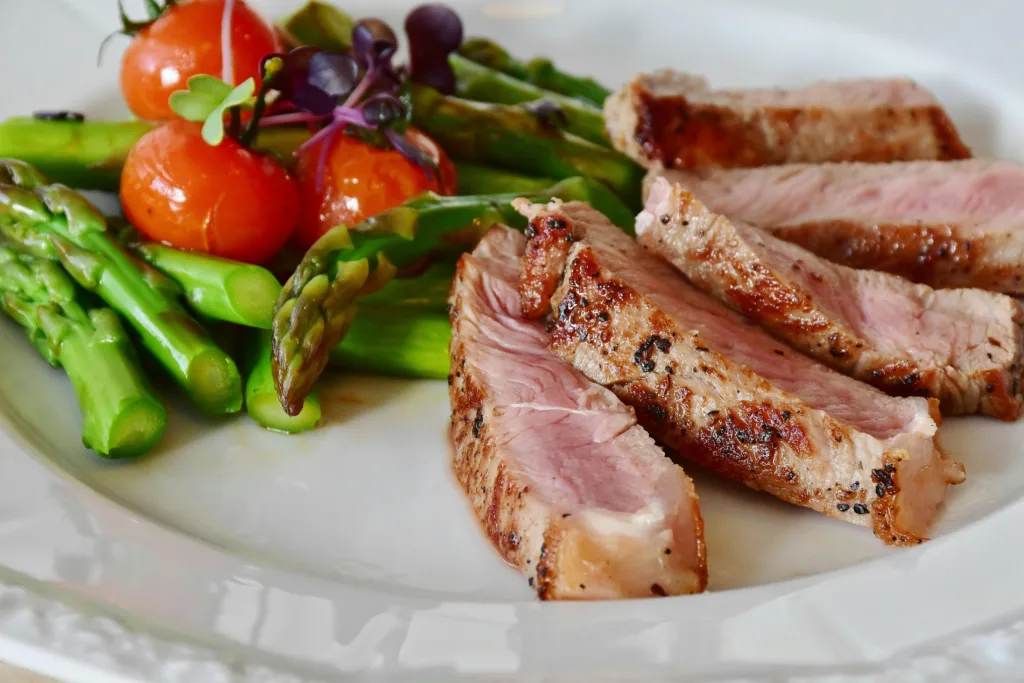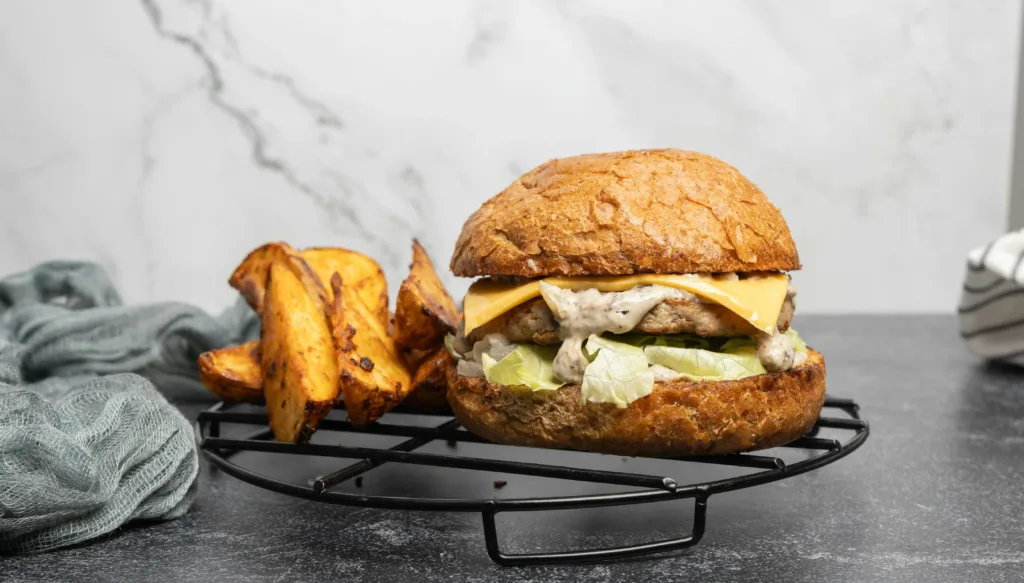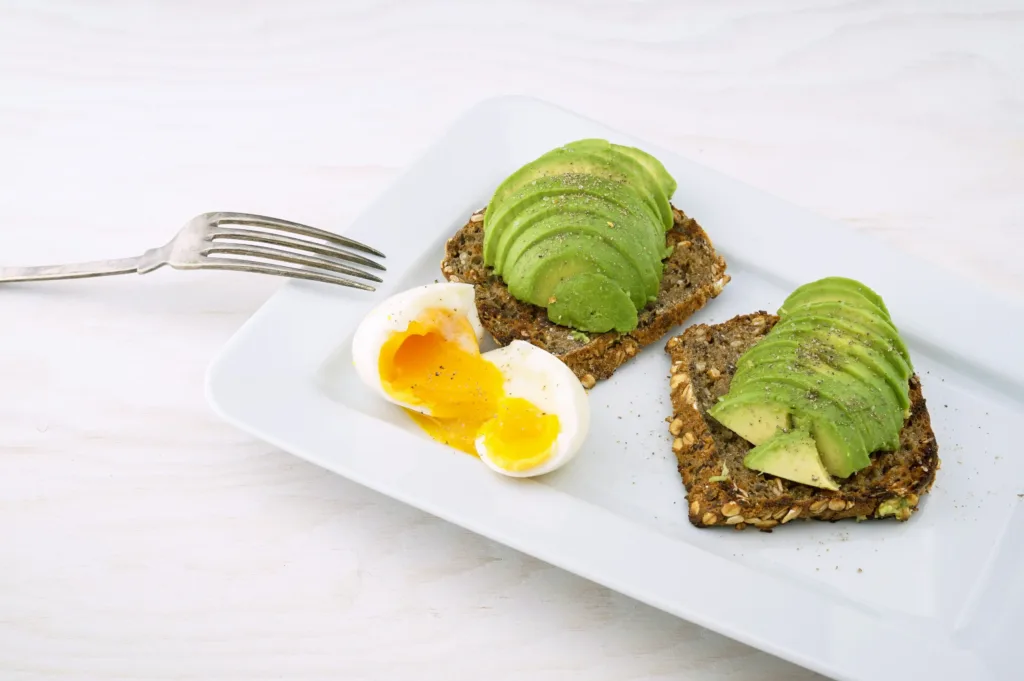Hey, if you’ve ever dealt with that nagging stomach burn from gastritis, you know how tricky it can be to figure out what to eat without making things worse. It’s basically inflammation in your stomach lining – maybe from stress, an infection, or just too much spicy takeout – and while it’s no fun, tweaking your diet can really help calm it down. We’re talking small, frequent meals that are gentle on the gut, dodging stuff like alcohol, spice, or acidic fruits. I pulled together this 7-day plan from what folks are loving right now, mixing in bland but flavorful options that actually taste good. And honestly, I’m obsessed with how apps like ReciMe make this a breeze – you can import these recipes in seconds, whip up a smart grocery list sorted by aisle, and even meal plan without the usual hassle. Let’s dive in and get you feeling better!
For folks looking to stay organized, an app like ReciMe can be a game-changer. Our app lets people save gastritis-friendly recipes from places like Instagram or even notes in seconds. ReciMe can build a meal plan that fits the small, frequent meal vibe, and the app sorts grocery lists by store aisle, cutting out the chaos of shopping. No more digging through scattered bookmarks or scribbled papers – ReciMe keeps everything in one spot, making it easier to stick to a stomach-soothing diet without the stress.


Why Gastritis Makes Eating Tricky
Gastritis is when the stomach’s inner lining gets inflamed, usually from something like a virus, too much booze, or even stress from a rough week. That lining is supposed to protect the stomach from its own acids and digestive juices, but when it’s irritated, you feel it – think burning pain, nausea, or getting full after just a few bites. This plan focuses on acute gastritis, the kind that hits fast and fades once the body sorts out the issue, like fighting off an infection. Big meals are a problem because they stretch the stomach, making the inflammation worse. Smaller, gentler meals are the way to go, keeping things calm while still letting people enjoy their food. It’s why spicy wings or a late-night burger are off the menu for now, but there’s still plenty of tasty stuff to eat.

Day 1
Breakfast:
Oatmeal cooked in water or almond milk, topped with sliced banana and a pinch of cinnamon, starts the day with a soothing, warm bite.
Recipe: Boil 1 cup water or almond milk, add 1/2 cup oats, simmer for 5 minutes until thick, then top with sliced banana and cinnamon.
Lunch:
Baked chicken breast, lightly seasoned with herbs, comes with steamed carrots and a small scoop of brown rice for a simple, filling lunch.
Recipe: Preheat oven to 375°F, season chicken with herbs like thyme, bake for 20-25 minutes; steam carrots until tender and cook brown rice in water for 20 minutes.
Dinner:
Baked cod with a hint of dill sits next to mashed sweet potatoes and sautéed spinach for a light, cozy meal.
Recipe: Bake cod at 400°F for 15 minutes with a sprinkle of dill; boil sweet potatoes until soft, mash them; sauté spinach in a bit of olive oil until wilted.
Snacks:
Low-fat yogurt with diced pear and a handful of almonds makes a quick, gentle snack between meals.
Recipe: Dice a pear, mix with plain low-fat yogurt, and add a small handful of almonds on top—no cooking needed.
Dessert:
A smooth banana and apple puree offers a mild, sweet end to the day without bothering the stomach.
Recipe: Peel and chop a banana and apple, blend until smooth, chill for 10 minutes if desired.
Day 2
Breakfast:
Scrambled eggs mixed with sautéed carrots and spinach sit on whole-grain toast, with a few banana slices adding a touch of sweetness.
Recipe: Sauté diced carrots and spinach in olive oil, add 2 beaten eggs and scramble until set; toast whole-grain bread and top with banana slices.
Lunch:
Shredded turkey mixed with mashed avocado and celery goes into a soft tortilla for a creamy, easy lunch.
Recipe: Shred cooked turkey, mash avocado with chopped celery, mix together, and wrap in a soft tortilla.
Dinner:
Turkey meatballs made with ground turkey and oats, simmered in mild broth, rest on whole-wheat pasta with a sprinkle of parsley.
Recipe: Mix ground turkey with rolled oats and form into balls, simmer in vegetable broth for 15 minutes; boil whole-wheat pasta, drain, and sprinkle with parsley.
Snacks:
A banana with almond butter spread on top, alongside whole-grain crackers, keeps snacking simple and satisfying.
Recipe: Slice a banana lengthwise, spread almond butter on top, and serve with whole-grain crackers—no prep required.
Dessert:
Blended low-acid blueberries with a drizzle of honey make a chilled, refreshing dessert that’s easy on the gut.
Recipe: Blend a cup of blueberries with a tablespoon of honey and a splash of water until smooth, chill before serving.
Day 3
Breakfast:
A hard-boiled egg comes with a smoothie of banana, mixed berries, and oat milk for a smooth, nutrient-packed morning.
Recipe: Boil an egg for 10 minutes; blend a banana, handful of berries, and oat milk until creamy.
Lunch:
Quinoa cooked in veggie broth, topped with steamed broccoli, diced sweet potato, and bits of grilled chicken, makes a balanced meal.
Recipe: Cook quinoa in vegetable broth for 15 minutes; steam broccoli and sweet potato until tender, grill chicken pieces, and combine everything.
Dinner:
Baked salmon with garlic powder and rosemary sits over brown rice with sautéed mushrooms for a warm, earthy dinner.
Recipe: Bake salmon at 375°F for 15 minutes with garlic powder and rosemary; cook brown rice, sauté mushrooms in olive oil, and layer together.
Snacks:
Sliced pear with almond butter, plus toast with cottage cheese and melon, offers a fresh, easy snack combo.
Recipe: Slice a pear and spread with almond butter; toast bread, top with cottage cheese and diced melon.
Dessert:
A baked apple sprinkled with cinnamon delivers a warm, low-acid treat that’s gentle and tasty.
Recipe: Core an apple, sprinkle with cinnamon, bake at 350°F for 20 minutes until soft.
Day 4
Breakfast:
Quinoa porridge cooked in milk with diced apple and a dash of cinnamon makes a hearty, stomach-friendly start.
Recipe: Cook 1/2 cup quinoa in 1 cup milk for 15 minutes, stir in diced apple and cinnamon.
Lunch:
Baked cod with mild herbs comes with mashed sweet potato and steamed asparagus for a clean, no-fuss lunch.
Recipe: Bake cod at 400°F for 15 minutes with herbs like parsley; mash boiled sweet potato, steam asparagus until tender.
Dinner:
Chicken marinated in light ginger and turmeric, sautéed with carrots and broccoli, sits over rice for a calm, flavorful dish.
Recipe: Marinate chicken in ginger and turmeric for 10 minutes, sauté with sliced carrots and broccoli; serve over cooked rice.
Snacks:
A banana with soaked almonds and a hard-boiled egg keeps things quick and mild between meals.
Recipe: Soak almonds in water overnight, drain, and serve with a peeled banana and hard-boiled egg.
Dessert:
Low-fat yogurt with honey and a handful of blueberries creates a creamy, cooling dessert.
Recipe: Mix low-fat yogurt with a drizzle of honey, stir in blueberries, and chill for 5 minutes.
Day 5
Breakfast:
Scrambled eggs with spinach on whole-grain toast, with a smear of almond butter, bring a bit of flavor to the morning.
Recipe: Scramble 2 eggs with chopped spinach; toast whole-grain bread and spread with almond butter.
Lunch:
A wrap with turkey, avocado, and kale, alongside a small bowl of veggie soup from carrots and potatoes, keeps lunch soothing.
Recipe: Fill a tortilla with sliced turkey, mashed avocado, and kale; simmer diced carrots and potatoes in broth for 15 minutes for soup.
Dinner:
Baked tofu with cumin and coriander, served with roasted root veggies and quinoa, offers a gentle, plant-based dinner.
Recipe: Bake tofu at 400°F for 20 minutes with cumin and coriander; roast root veggies like carrots, serve with cooked quinoa.
Snacks:
Low-fat yogurt with a touch of honey, plus whole-grain crackers with avocado, makes a light, easy snack.
Recipe: Stir honey into low-fat yogurt; mash avocado on whole-grain crackers.
Dessert:
A fruit salad with chopped banana and melon stays fresh and sweet without any hassle.
Recipe: Chop banana and melon, mix together, and serve immediately.
Day 6
Breakfast:
Steel-cut oats topped with blueberries, a few walnuts, and a pinch of cinnamon make a warm, filling morning meal.
Recipe: Cook steel-cut oats in water for 20 minutes, top with blueberries, walnuts, and cinnamon.
Lunch:
Grilled chicken over steamed spinach, carrots, and beets, with a sprinkle of oregano, creates a colorful, mild plate.
Recipe: Grill chicken with oregano; steam spinach, carrots, and beets, then layer the chicken on top.
Dinner:
Pan-seared salmon with dill, served with rice pilaf mixed with fennel and celery, wraps up the day with a light, satisfying meal.
Recipe: Sear salmon in a pan with dill for 4 minutes per side; cook rice with chopped fennel and celery.
Snacks:
Apple slices with peanut butter, plus crackers with cottage cheese, keep snacking simple and stomach-friendly.
Recipe: Slice an apple and spread with peanut butter; top crackers with cottage cheese.
Dessert:
A baked pear with a touch of cinnamon offers a cozy, low-acid way to end the evening.
Recipe: Core a pear, sprinkle with cinnamon, bake at 350°F for 20 minutes.
Day 7
Breakfast:
An egg white frittata with herbs and veggies like zucchini on whole-grain toast starts the morning fresh and easy.
Recipe: Whisk egg whites with herbs and diced zucchini, bake in a pan at 350°F for 15 minutes; serve on toast.
Lunch:
A lentil stew with carrots, potatoes, and thyme, served with whole-grain bread, makes a hearty but gentle lunch.
Recipe: Simmer lentils with diced carrots, potatoes, and thyme in broth for 20 minutes; serve with bread.
Dinner:
Herb-roasted chicken thighs with mashed cauliflower and steamed veggies create a comforting, low-irritation meal.
Recipe: Roast chicken thighs with herbs at 400°F for 25 minutes; mash boiled cauliflower, steam veggies like green beans.
Snacks:
A banana and apple puree with a few corn crisps makes a light, crunchy bite between meals.
Recipe: Blend banana and apple until smooth, serve with corn crisps for dipping.
Dessert:
Low-fat yogurt with diced pear and a drizzle of honey ends the week on a smooth, sweet note.
Recipe: Dice pear, mix with low-fat yogurt and honey, stir gently.

Foods to Skip for a Calmer Stomach
Some foods and drinks can make gastritis symptoms flare up, so people steer clear of them to keep the stomach happy. Here’s a quick list of what to avoid and why:
- Alcohol: It irritates the lining directly, making inflammation worse.
- Spicy foods, like hot sauce or chili peppers: They can sting the already sensitive stomach.
- Acidic stuff, such as oranges or tomatoes: This adds to the irritation, even though the stomach handles acid normally.
- Coffee and caffeinated drinks: Even your favorite morning brew can be tough to give up but often ramps up symptoms.
- Fizzy sodas: The bubbles can bother the gut and cause more discomfort.
- Greasy or fried foods, like fries or fatty meats: They sit in the stomach too long, slowing digestion and adding to the pain. The good news? There’s still a ton of variety left – people don’t have to stick to flavorless mush to feel better.

Tips for Eating with Gastritis
Eating with gastritis takes a bit of strategy, but it’s not rocket science. Here are some straightforward tips to ease symptoms:
- Go for smaller, more frequent meals: They don’t overload the stomach, which can be a real relief when it’s inflamed.
- Stay hydrated, especially if nausea or vomiting is happening: Drink enough water or mild fluids to avoid dehydration on top of everything else.
- Stop eating about 3 hours before bed: Hitting the sack with a full stomach might lead to waking up with that burning feeling.
- Skip the super bland diet myth: People don’t need just plain rice and toast – milder foods like oatmeal or baked chicken work well, and there’s still room for flavor. An app like ReciMe can help plan out those small meals and keep track of what’s on the plate, making the whole process less of a headache.
Conclusion
Dealing with gastritis doesn’t mean giving up on good food – it’s about choosing meals that keep the stomach calm while still tasting great. This 7-day plan sticks to gentle, easy-to-digest options like oatmeal, baked fish, and low-acid fruits, helping people feel better without the hassle. Saving recipes in an app like ReciMe can make it easier to stay organized, from jotting down ingredients to planning meals. Everyone’s stomach is different, so checking with a doctor or dietitian can help tweak this plan to fit specific needs.
FAQs
Can people eat spicy foods during a gastritis flare-up?
No, spicy foods like hot sauce or chili peppers can irritate the stomach lining and make symptoms like burning or pain worse. It’s better to stick with milder flavors, like herbs or a touch of cinnamon, until the stomach settles down.
Do meals need to be super bland for gastritis?
Not at all. While old advice pushed plain diets, people can enjoy a variety of foods as long as they avoid irritants like acidic or greasy stuff. Things like baked chicken or quinoa with veggies bring flavor without causing trouble.
How often should people eat with gastritis?
Smaller, more frequent meals – think four to six a day – work better than big ones. They don’t stretch the stomach as much, which helps keep discomfort in check, especially during a flare-up.
Why is hydration important for gastritis?
If nausea or vomiting is happening, drinking enough water or mild fluids prevents dehydration, which can make things worse. Clear or pale yellow urine is a good sign people are getting enough fluids.
